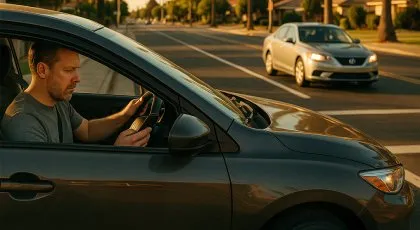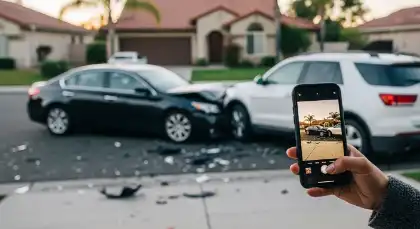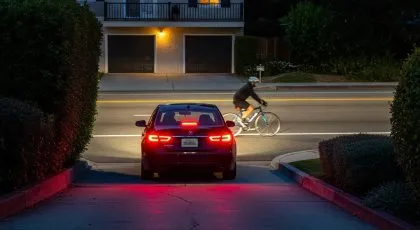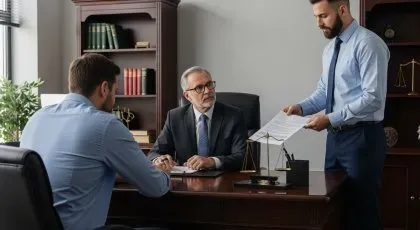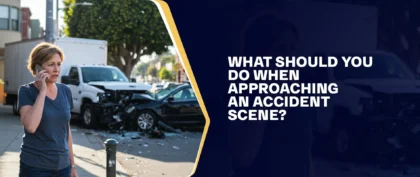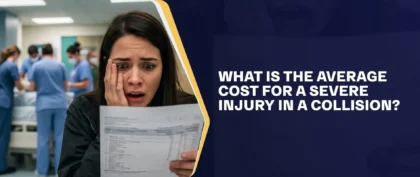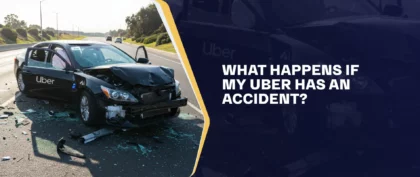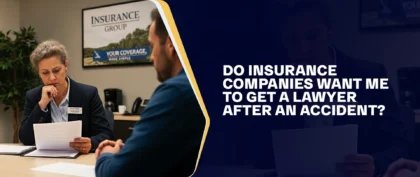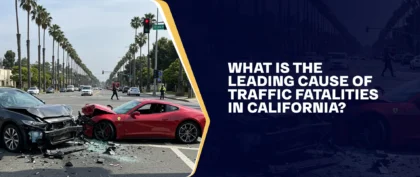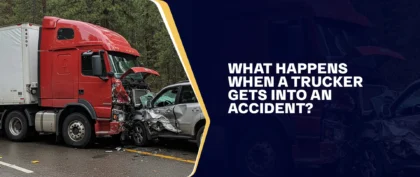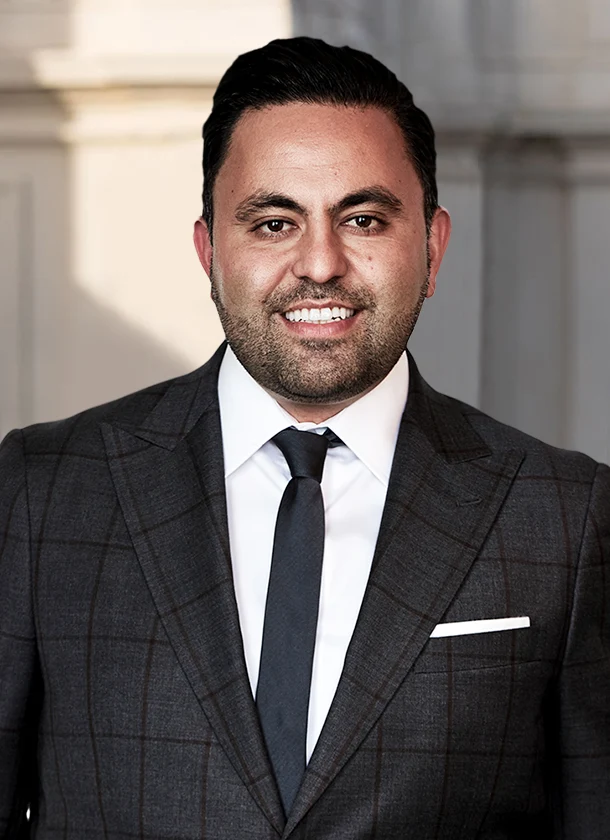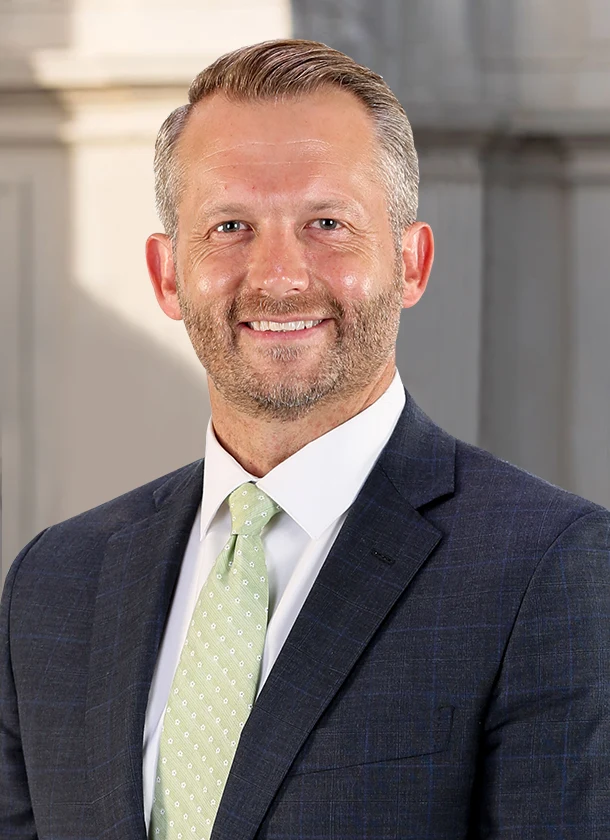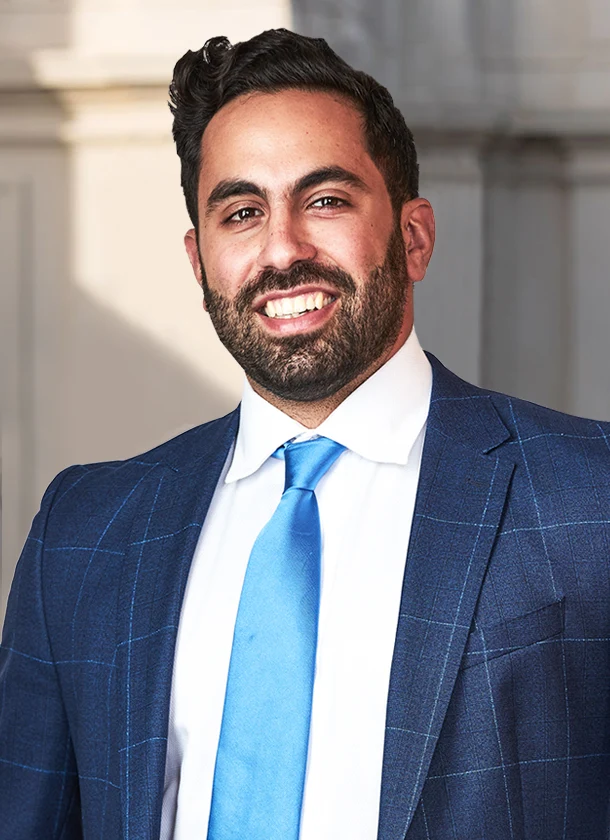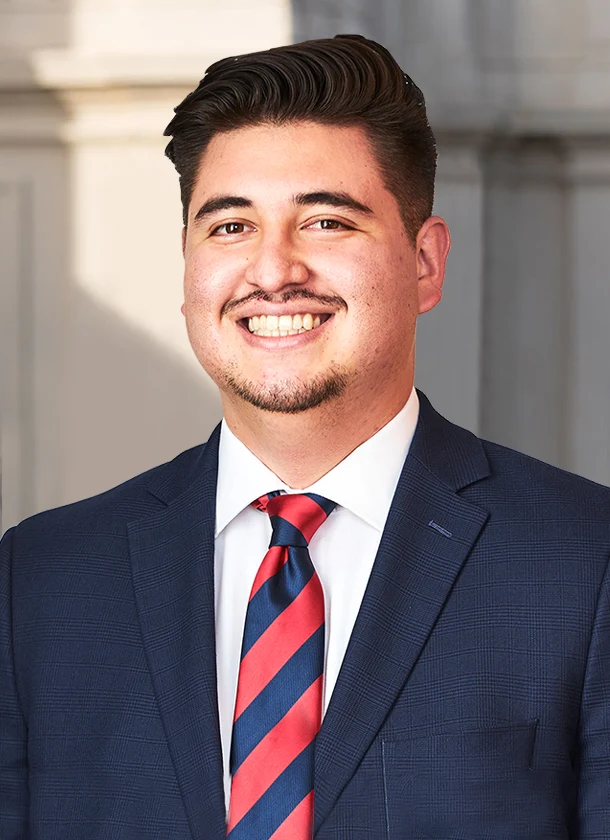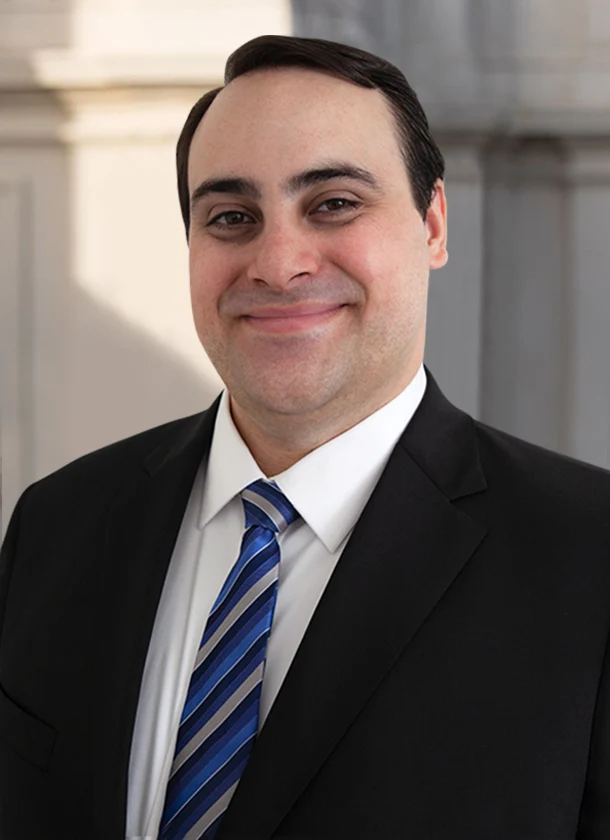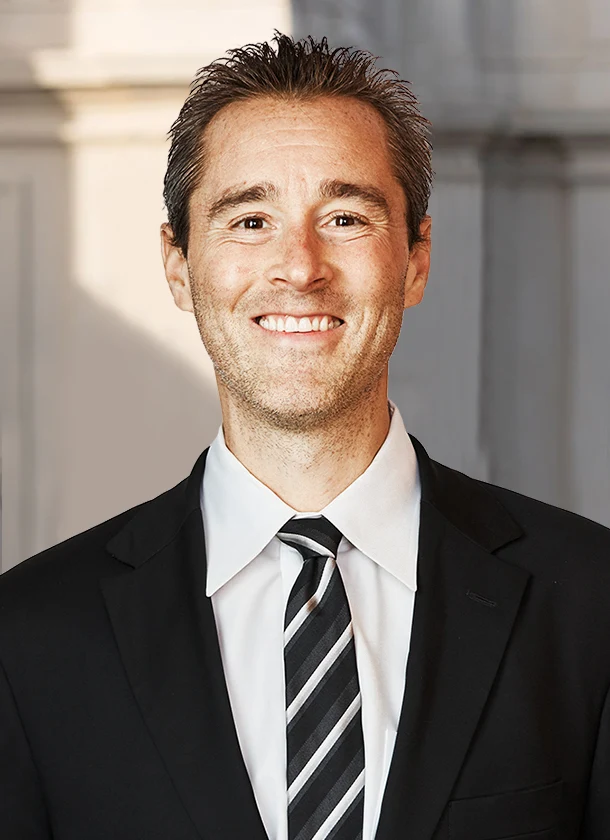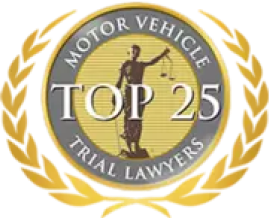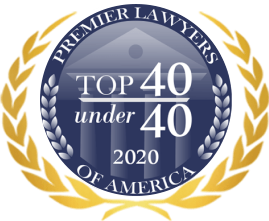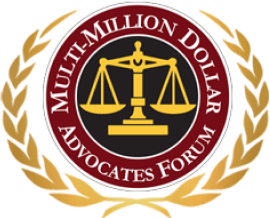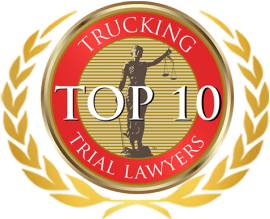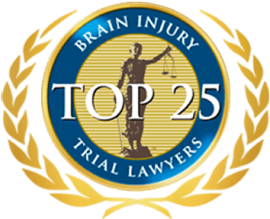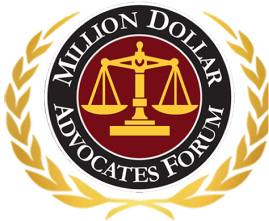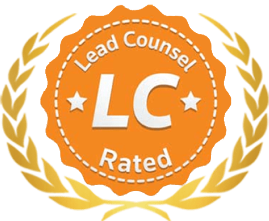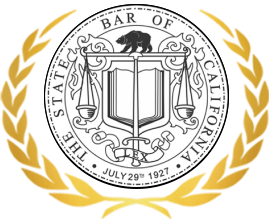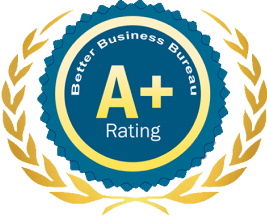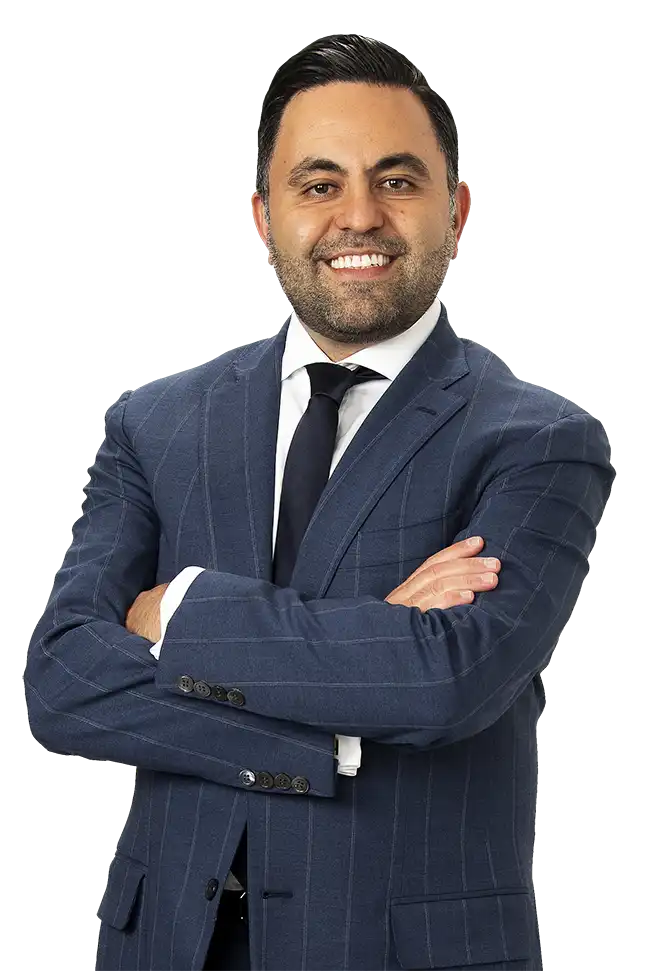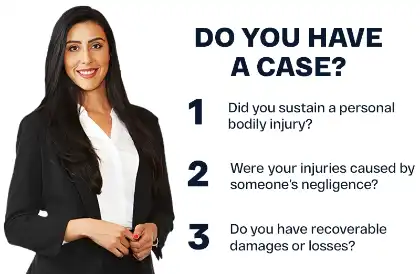TL;DR: When a vehicle exits a driveway in California, the driver must yield to vehicles, cyclists, and pedestrians already on the road or sidewalk. Failing to yield can make them legally liable for a crash. If you were injured, you may be entitled to compensation for medical costs, lost income, and pain and suffering. Call Arash Law at (888) 488-1391 for free legal help.
Table of Contents
In California, drivers exiting a private driveway must yield to all traffic already using the road or sidewalk, including vehicles, pedestrians, and cyclists. This duty exists to prevent collisions and protect vulnerable road users. When a driver pulls out without checking their surroundings and causes a crash, they may be held responsible for the resulting injuries and property damage.
Driveway accidents often happen because of poor visibility, distractions, or rushing into traffic. Victims may face medical bills, lost income, and ongoing pain, and determining fault can be complicated, especially if both vehicles were moving or if comparative negligence applies.
If you were hurt because another driver failed to yield when exiting a driveway, California law gives you the right to pursue compensation. An experienced car accident lawyer can help you gather evidence, deal with insurance companies, and seek the maximum recovery allowed under the law.
Key facts about California driveway right-of-way rules:
- Drivers exiting driveways must yield to all road and sidewalk users.
- Failure to yield can result in legal liability.
- Fault is based on right-of-way and rule compliance.
- Comparative negligence may reduce but not eliminate recovery rights.
- Evidence like photos, videos, and witness statements can prove fault.
The Right-Of-Way When Someone Exits A Driveway
Under the California Vehicle Code, anyone exiting a driveway, alley, or parking lot must yield to traffic already on the road. That includes other vehicles, pedestrians, and cyclists.
If a driver pulled out and hit someone, they may be at fault for not yielding the right of way. That means the victim may have a valid claim for compensation. A traffic accident lawyer can assess the case to determine if its validity.
Yielding helps:
- Prevent crashes.
- Protect pedestrians and cyclists.
- Keep traffic moving safely.
If the other driver failed to yield, causing your injuries, you don’t have to pay the price. Failure to yield accident attorneys can help you pursue recovery of damages like medical bills and lost wages.
Why Do Driveway Accidents Happen?
Driveway accidents often happen when drivers act carelessly or rush into traffic without checking their surroundings.
Common causes include:
- Failing to yield to vehicles already on the road.
- Reversing without checking for people, bicycles, or approaching cars.
- Blocked visibility from trees, fences, hedges, or parked vehicles.
- Using phones, adjusting controls, or being distracted while pulling out.
- Overreliance on backup cameras and sensors.
- Speeding out of a driveway without stopping or scanning both directions.
- Driving under the influence of drugs or alcohol.
- Ignoring weather conditions, like rain or glare, that reduce visibility.
- Driving with limited experience, especially among teenage or elderly drivers.
Cars entering the street must yield to vehicles that are already driving on the road. It may also help to slow down while exiting to avoid speeding-related accidents. The person leaving the driveway had a legal duty to wait until it was safe. If they do not yield, they can be held liable for the crash.
Yielding reduces the risk of crashes, protects pedestrians and cyclists, and keeps traffic flowing safely. This practice is especially important in dangerous cities for pedestrians where risks are higher.
Safety Tips For Drivers Exiting Driveways
In order to avoid accidents when exiting a driveway, here are some things you can do:
- Understand Your Blind Spot — Be familiar with your car’s blind spots before exiting the driveway. Note that collision with vehicles is the most common bike accident, and being cautious about blind spots can prevent injuries to vulnerable road users, such as cyclists and pedestrians.
- Check Your Surroundings — Always check both directions before pulling out, even if you have a clear view. Be mindful of pedestrians and cyclists who might be difficult to spot, especially at night or in low-visibility conditions.
- Ask for Assistance — If you are with someone, ask them to help spot oncoming cars while reversing. Use a rear-view camera for better visibility.
- Stay Alert — Don’t assume there is no one near your driveway. Avoid distractions such as phone use or adjusting controls while exiting.
- Exit With Care — Slow down and stop if necessary to ensure it’s safe to enter the road.
Determining Fault In Driveway Collisions
If someone exiting a driveway hits your car, they’re usually responsible, but it’s not always that simple. Before you can claim compensation, insurance companies, adjusters, and vehicle accident lawyers will examine the facts to determine who was at fault.
They may look at:
- Whether the exiting driver failed to yield.
- If either driver was distracted or speeding.
- Whether anyone else, like a cyclist or pedestrian, was involved.
Proving who is liable can be challenging in certain cases. Car accident lawyers often rely on evidence such as dashcam footage, surveillance video, or witness statements to determine fault. While drivers exiting a driveway must yield, other road users should also take precautions.
Parking lot accident lawyers may also investigate whether hazardous road design or layout contributed to the incident. If so, the case could potentially fall under premises liability. In such cases, premises liability lawyers may help victims pursue a claim against the property owner or the company responsible for developing or maintaining the property.
Comparative Negligence In Driveway Accidents
California follows a pure comparative negligence system, which allows more than one person to share responsibility for the same crash. Here’s how this rule works:
- Fault can be divided between parties based on the circumstances. For example, if a driver exiting a driveway causes a crash, but the other driver was speeding, both may share responsibility.
- A party can still recover damages even if they are partly at fault. However, the compensation amount decreases according to the percentage of fault assigned. For example, if you are found 30% at fault and your damages total $10,000, you may still recover $7,000.
In some at-fault states with modified comparative negligence, a party found 50% or more at fault may not be able to recover damages. A car accident attorney can explain this legal concept if it applies to your situation.
If you already have legal counsel, it may be advisable to consult them for free accident lawyer advice for challenging issues like shared fault.
Steps To Take After A Driveway Accident
It is advisable to know what to do after a car accident, such as a driveway collision. Here are some recommended steps to consider:
- See a Doctor — Some injuries may take hours or days to appear after a traffic accident. For example, traumatic brain injuries may not be immediately noticeable. It’s best to go to the doctor and get a thorough examination. In addition, a medical checkup documents your condition for your injury claim.
- Gather Key Evidence — Photograph the damage to your car, street signs, and the driveway. These images may be able to support your version of events.
- Record Contact Information — Write down the drivers’ and witnesses’ names and phone numbers. Their statements may support your claim, whether or not it goes to court.
- File a Report — Having an official report helps protect your rights and supports any insurance or legal claims by helping prove what happened.
- Contact a Lawyer — Car accident attorneys can assist with the legal processes, like filing the case and talking to insurers, so that you can focus on recovery.
FAQs For Victims Of Driveway Accidents
Driveway collisions can raise unique legal questions. This section answers the most common questions people ask after getting involved in or affected by one of these incidents. Speak with a car accident lawyer at our law firm if you need personalized assistance. Call us at (888) 488-1391 or fill out our online contact form.
How Long Do I Have To File A Claim In California?
The law sets strict deadlines, called the statutes of limitations, for filing injury and property damage claims. If you miss this deadline, you may lose your right to compensation.
In California, the time you have to file a claim depends on the type of case.
- Personal Injury — You have two years to file a lawsuit for a personal injury case.
- Property Damage — You have up to three years to file a claim for damage, such as car repairs or replacement.
If the driveway connects to or is located on public property, such as a park, school, post office, or other municipal facility, a city, county, or state agency may be responsible.
They may be liable if:
- They failed to address poor driveway design, missing signage, or malfunctioning traffic lights.
- The crash resulted from obstructed views caused by overgrown vegetation or poorly maintained curbs.
- A publicly owned vehicle was involved in the collision.
If a public agency played a role in the crash, you must file an administrative claim within six months to protect your rights.
Some exceptions can extend the deadline for filing a personal injury case. For example, if the injured person is a minor, the two-year clock typically doesn’t start until they turn 18. From that point, they may still have two full years to take legal action.
A car accident lawyer can review your case, explain which deadlines apply, and guide you through the steps to file a claim on time.
Does The Exiting Driver Always Have To Stop?
Not always, but they must yield to anyone already using the road or sidewalk, including vehicles, pedestrians, and cyclists. This practice is particularly vital for more vulnerable road users like cyclists, as failing to yield is the main cause of bicycle accidents.
The law requires a full stop if visibility is limited, a stop sign is posted, or entering the road would be unsafe. Even without a sign, the driver must slow down, check both directions, and yield when necessary.
If the driver fails to make sure it’s safe before pulling out of the driveway and then causes a crash, they may be held at fault.
What If Both Vehicles Were Moving?
In some driveway accidents, both vehicles are in motion, like when a car backs out as another vehicle on the street drives past. These situations can be confusing, but the law protects your right to recover compensation.
The driver exiting the driveway must yield to oncoming traffic. If they didn’t stop or check before pulling out, they may be held liable for the crash.
However, insurance companies might argue that you share some fault, for example, if you were speeding or couldn’t stop in time. California’s comparative fault rules allow both drivers to share responsibility, but that doesn’t mean you lose your rights to file a claim.
Even if you’re partially at fault, you may still recover damages. A car accident lawyer can help gather evidence, push back against unfair blame, and work to reduce your share of fault so you receive the compensation you deserve under the law.
What Types Of Compensation Can I Claim For A Driveway Accident?
If you got hurt in a driveway crash, you may be able to pursue compensation for the physical, emotional, and financial impact it caused. The amount you can recover depends on how serious your injuries are and how the accident has affected your daily life. Personal injury lawyers can assess your case and help you understand the types of compensation that may be available to you.
Here are common types of compensation victims may be able to claim:
- Medical Expenses — This includes emergency care, hospital stays, surgeries, follow-up appointments, therapy, medications, and long-term treatment or rehabilitation.
- Property Damage — Victims may receive money to repair or replace their vehicle or other personal property damaged in the crash.
- Lost Income — If the injuries from the accident kept someone from working, they may pursue compensation for lost wages and missed bonuses or commissions. If their injuries led to permanent disability, they may seek damages for lost future income.
- Pain and Suffering — It is possible to seek compensation for physical pain, emotional distress, anxiety, depression, sleep problems, and reduced enjoyment of life. To support the claim, victims may need to provide medical records, therapist evaluations, and other relevant documentation.
- Punitive Damages — In rare cases involving extreme recklessness or intentional harm, the court may award additional damages to punish the liable party.
Let Our Driveway Accident Lawyers Fight For Your Rights
Drivers who back out of driveways into public roads are supposed to yield. However, some ignore this basic rule, rushing into traffic without checking or assuming others will stop for them. When their carelessness causes a crash, you shouldn’t be left to deal with the consequences alone.
Some insurance companies move fast after these accidents. They may pressure you into a quick settlement that barely covers your medical bills. If you’re getting calls and offers before you’ve even had time to recover, you might be asking yourself, “Do I need a personal injury lawyer?”
There are plenty of benefits to it. Our car accident attorneys at Arash Law know how to handle driveway accident claims. We can:
- Assist in determining who should be liable for the collision.
- Apply California’s right-of-way laws to establish fault.
- Use police reports, photos, and witness statements to strengthen your case.
We also offer a free initial consultation to review your claim and explain your rights. Call (888) 488-1391 or fill out our “Do I Have a Case?” form. We work on a contingency fee basis, so you don’t pay attorney fees unless we win. You can ask us to discuss our payment structure during the call. Let our driveway accident lawyers handle the legal process for you.

